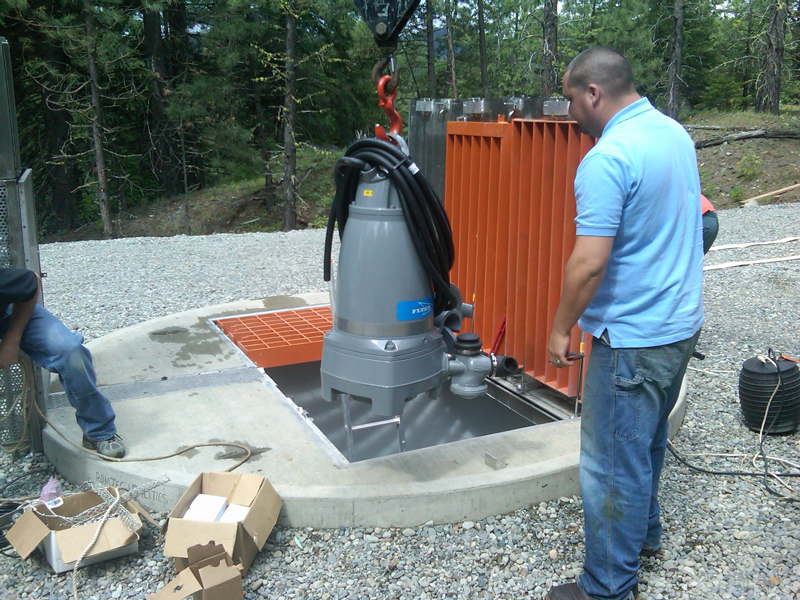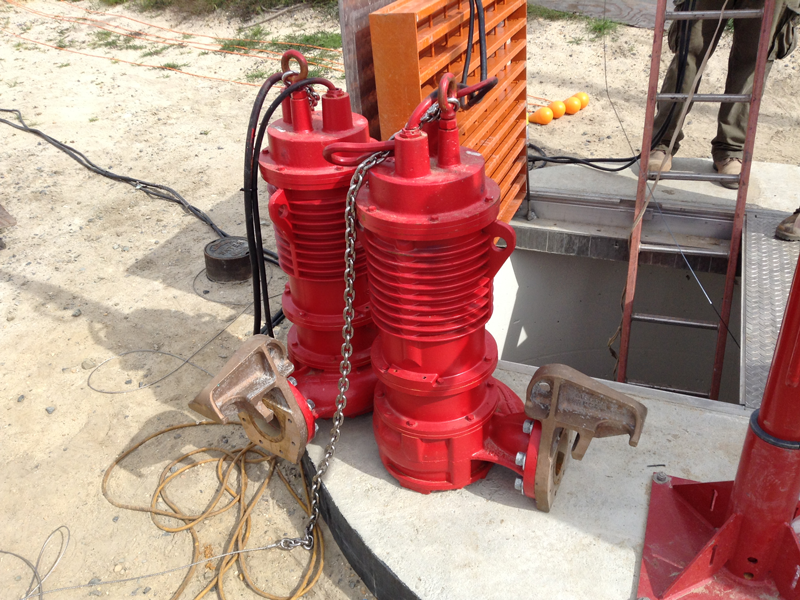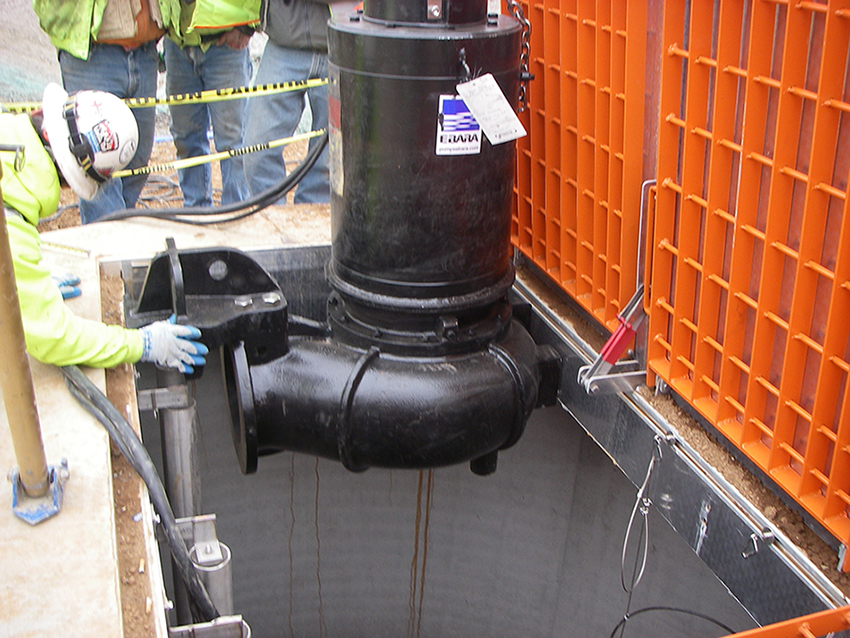
In the last blog, we discussed pumps and how the specific system requirements, like water type, flow, pressure, and configuration, impact a good pump selection. This week, we will take a look at the actual pumping mechanism. There are many styles of pumps, and among the styles there are different components that affect the pump. Additionally, we will take a look at how the available utility power can affect the pump operation. These topics are intended to further help identify the key areas of understanding required to make a good pump selection for any and all pump station projects. Now, let’s talk pump designs.
Pumps are available in many different designs. There are surface-mounted pumps, split-case, turbines, self-priming, positive displacement, and many, many more. The most commonly used pump by Romtec Utilities is a submersible centrifugal pump. Each design offers advantages that may make one type preferable to another for a specific application. A good pump selection typically prioritizes reliability, ease of maintenance, and cost when considering the pump design. Many pump stations are located in remote areas, making submersible pumps ideal as they are reliable and cannot be accessed by would-be vandals. On industrial facilities or treatment plants with employee supervision, surface-mounted or self-priming pumps have better accessibility for maintenance personnel without adding a risk of vandalism.

Aside from exterior factors, there are other reasons for selecting one pump technology over another. In the first blog, we discussed water types and pump curves. Both of these factors can change the best suited pump design considerably. If the water is highly viscous, like oily water, a positive displacement pump might be the best selection. Clean water is much different. Turbine pumps, for example, are able to pump high volumes of clean water at high pressure, and axial flow pumps can also pump high volumes of clean water but are not able to pump at very high pressure. Each pump design has its own particular strengths and weaknesses related to the water being pumped.
When looking at axial flow pumps, these pumps use a propeller to pump water. Propellers pump water through the conversion of rotating movement to linear movement by the blade pitch of the propeller. Since the propellers are directly transferring energy to the water through contact, solids in the water can damage the functionality of the propeller. Impellers pump water in a different way. Impellers convey centrifugal energy to the water. This force creates low pressure (suction) at the center of the impeller and high pressure on the pump walls, called the volute. The shape of the volute creates flow away from the impeller and into the piping. Since impellers develop flow by creating high and low pressure zones, they can transmit some solids without making direct contact.

Some impellers, however, are designed to contact solids. These are called cutter pumps, which are one type of macerating pumps. Macerating pumps utilize impellers and are designed specifically to process solids. They are also called solids-handling pumps. Some styles, like cutter, slicer, and chopper pumps, cut through solids and pass them up to a certain diameter. Grinder pumps, on the other hand, grind solids into slurry. A grinding mechanism separate from the impeller creates the slurry. How solids are passed depends on whether the impeller is closed, open, or semi-open. Typically, the type of impeller used is related to preventing clogging, but impellers can also be modified to achieve a specific pump curve.
One final key aspect of a pump design is related specifically to the pump motor. This is the power supply. Power supply is one the most important yet least understood qualities of a pump’s functionality. Power supply is available in either a single-phase or three-phase power, and both types are not always available in every location. For pumps, three-phase power is the most reliable and efficient power supply, but in rural and residential areas, single phase power might be the only available supply. Single phase power can only power up to about a 5 hp pump motor, and if it is a grinder pump, single phase power is likely not adequate enough to power the grinder through suspended solids. In some cases, it is possible to configure a pumping system with pumps that can utilize single phase power, but it is more likely that three-phase power will be needed.

If your pumping requirements, like using grinder pumps, require three phase power, the power supply must either be brought in by the utility power company or it can be converted from single phase power onsite. With power supply, the available power can dictate your pump selection, but quite often, the pump selection will dictate the power requirement. Three phase power is more efficient, and pumps can operate with less voltage. NFPA regulations for hazardous locations, like with wastewater, will specify maximum voltage in a well. If submersible pumps are used in a hazardous location, three phase power will help keep the power supply within the regulated limits. With only single phase, submersible pumps may not always be suitable. Romtec Utilities always recommends getting a three phase power supply if it is at all feasible.
Pump selection goes beyond just the pump station and includes the design of the pump itself. In addition to the water type, the pump curve, and the pump configuration, aspects of the pump design are equally important toward making a good pump selection. Today, we looked at how the pump design, the impeller, and the motor/power supply can impact your pump selection as well. Many of these choices are particular to each individual project. Understanding the culture and environment of where a pump station operates can be equally important to a pump selection as the pumping requirements. In the next blog, we will finish off this series by looking deeper at the external factors that affect a good pump selection.
